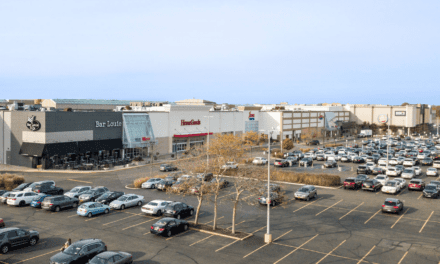EDITOR’S NOTE: The following is the original version of a reported column that was first written in February 2017. The version that was eventually published eliminated both critical analysis and interviews with community members who opposed the project. Due to those significant changes, The Foggiest Idea chose not to have an association with the piece that was eventually made available to the public.
You can read this original version, restored to reflect the article’s original intent, below. For the latest developments on Garvies Point since this piece was written, be sure to check The Foggiest Idea and local/regional media outlets.
$1 Billion Glen Cove mixed-use waterfront project moves forward after decades of uncertainty.
By Richard Murdocco
RXR Realty’s $1 billion development project on Glen Cove’s waterfront is poised to reinvigorate an area that in recent decades has struggled with nurturing economic development.
After years of back-and-forth, RXR broke ground on Garvies Point, the 56-acre mixed-use development on Dec 6. The milestone, called “rewarding” by the developer’s first vice president of development Frank Haftel, comes after resident lawsuits looking to halt the project were dismissed and various government approvals were secured.
RXR’s project calls for more than 550 for-sale condos, 540 rental apartments and roughly 75,000 square feet of commercial and retail space. The first phase of construction, now underway, includes 385 rental units and 167 condos as well as the redevelopment of nearly 28 acres of public park space, including a 1.1-mile boardwalk, playground, walking trails, bike path, and dog park. “We are creating this fantastic public environment,” Haftel said. “The mix of uses within the project as well as the public space, the retail, the office spaces will create a vibrant, active and diverse community, which will be a very inviting place. The project itself will be a destination, but we believe in the future of Glen Cove. We think the downtown will be revitalized and the entire area will be more desirable.”
The project has undergone multiple variants ranging in density, size and layout over the years to end on this final design. For some, Garvies Point raises substantive questions about the size and scope of Uniondale-based RXR Realty’s ambitions for the site. Amy Peters, a Glen Cove resident since 2004, is a member of the Committee for a Sustainable Waterfront, a non-profit group formed in response to the project years ago. “I feel it’s twice as big as it needs to be,” Peters said. “Originally, the project was proposed to be much smaller, and over the years it’s gotten bigger and bigger.”
Conversely, in the eyes of the municipality, the project is an economic must-have for the city and its residents. Mayor Reginald Spinello has been a champion of the development since taking office in January 2014. Spinello, who is currently serving his second term, said that when elected mayor, he “…entered into a project that began almost twenty years ago.”
To understand the complexity of the Garvies Point project, one must consider the property’s checkered past.
Historically, the city has struggled with reviving its waterfront, thanks to a noxious cocktail of local politics and environmental issues. In the past, the waterfront near Garvies Point would have been an unlikely candidate for RXR’s grandiose vision. The property, previously owned by Dr. Thomas Garvie in the 19th century, was once the site of a booming commercial shipping hub, according to Glen Cove Public Library achieves. Eventually, with the creation of a steamboat service to New York City to the immediate north of Garvies Point, Glen Cove became a commuter destination, as neighborhoods of lavish estates for wealthy executives were being built. The transformation of the city continued into the 20th century, when various industries cropped up along Glen Cove Creek, a small estuary that fed into Hempstead Harbor.
By the mid-20th century, the area’s industrial legacy was felt not with robust economic activity, but rather the specter of environmental contamination after the area became a site for metal processing and disposal. This unfettered industrial activity eventually led to the surrounding area and creek being declared as a series of designated Superfund sites, or environmentally contaminated properties in need of clean up, by federal and state environmental agencies.
Due to these environmental issues the road to redeveloping the waterfront has been rocky. RXR reportedly purchased the property for $15 million, despite concerns over the site’s environmental conditions. Today, after more than 20 years of remediation, and $120 million of investment from New York State and the EPA, the toxic sites have been essentially cleared, allowing for the developer to begin redeveloping the area. The city’s planning board approved the first phase of the project in November 2014, but it was not without concern.
According to Newsday, 105 residents from the Village of Sea Cliff, Glen Cove and other nearby communities filed a series of lawsuits against both the city and RXR Realty seeking to annul city planning approval for Garvies Point, as well as alleging violations of environmental law. Peters was a plaintiff in one of these unsuccessful lawsuits, which was dismissed in August 2016.
Roger Friedman, president of the Committee for a Sustainable Waterfront, continues to express concern about the project’s size: “There is no precedent for this kind of development in terms of height and sheer mass on the North Shore, if not anywhere else on Long Island.” Friedman said the redevelopment process could have been smoother if RXR solicited more input from the community. “We’re not against the development. It’s laudable that the city and EPA cleaned up the site. We believe strongly for a number of reasons this wasn’t an inclusive or transparent process. Communities don’t feel their concerns have been taken into account—hence the resistance,” he said.
With the project’s environmental issues remediated, and permits in place, Spinello said the city and the developer can begin attracting young families and empty nesters who want to live in a city with a suburban vibe. “The waterfront can help make Glen Cove a destination location,” he said. “I think it’s a once in a lifetime opportunity. It will stimulate the local economy, grow the tax base and attract people.”
When asked about the Village of Sea Cliff, their community opposition and lawsuits against Garvies Point, Spinello was unfazed. “Neighbors don’t sue neighbors. I believe what they did was very unprofessional,” he added, continuing to say Glen Cove has always helped their neighboring village, and that residents are generally on board with RXR’s vision. “I believe the city is supportive. Just because people speak the loudest, they aren’t the majority.”
In Glen Cove, things are similar to the rest of Long Island, where building a large project isn’t an easy task. As the mayor said: “When a project is this big, everybody can find something they don’t like.”
Regardless, changes are coming to Glen Cove’s waterfront, and time will tell if the project will live up to the claims being made by either side. Haftel expects the entire development to complete within the next five to seven years.
Cyndi Murray contributed to this report.














